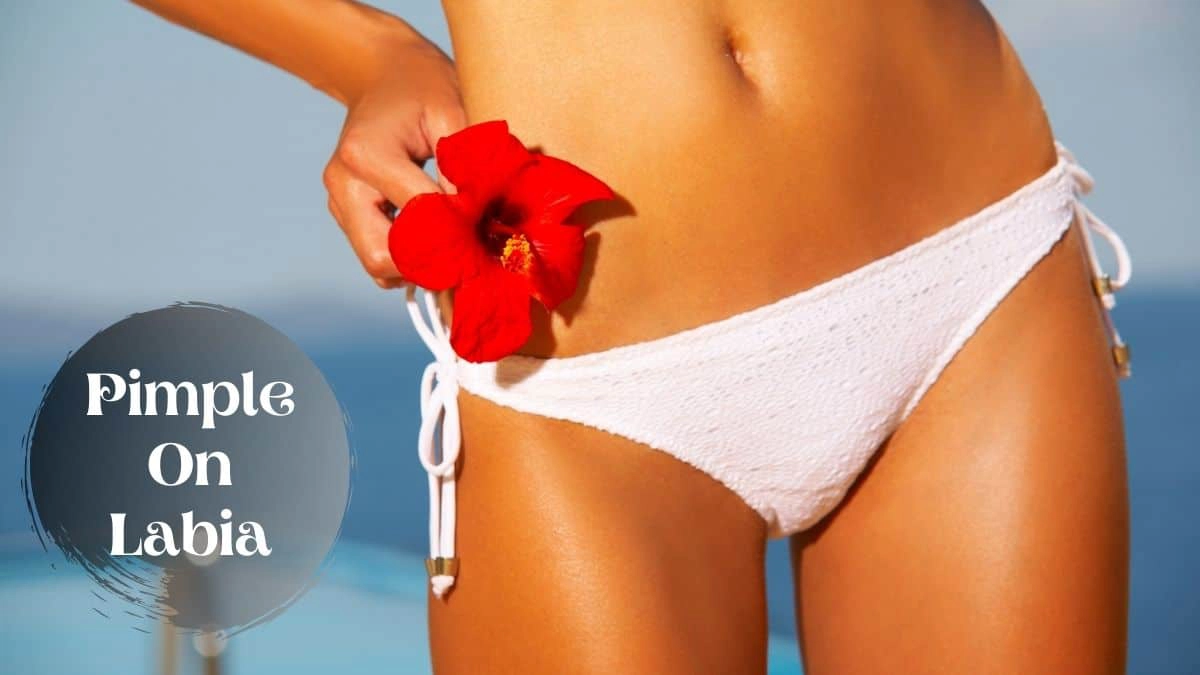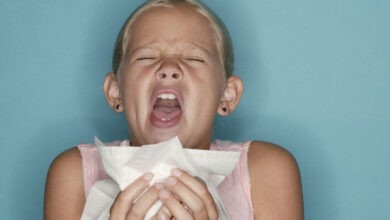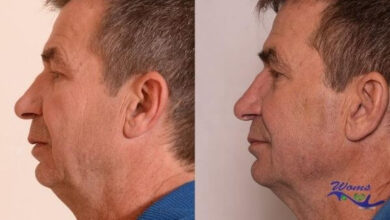Pimple On Labia – What is it?

Your labia is one of the extremely vulnerable regions of your system, so if anything is wrong with it, you’ll sense it right away. Pimple on Labia is often not an indication of anything severe, but they can be bothersome in everyday life. It’s better to avoid attempting to pop the pimple on Labia. For one reason, it has the potential to transmit germs and cause infection. Similarly, you might confuse it with the vaginal cyst.
Furthermore, this delicate area is easily inflamed. And you’re probably going to make things a lot worse. If the pimple fills with pus and continues to grow larger for many days, it can turn into a boil. It can get itchy as it develops.
It’s never a good idea to try to burst or scratch at a pimple near your genital region. It’ll most likely burst on its own. Instead, make an appointment with your doctor, who will be able to lance the boil in a method that prevents infection. In this piece, we’ll look at the causes, symptoms, and treatment options for the pimple on labia.
Causes Of Pimple On Labia
Even though these globs are not pimples, many keep referring to them as such due to their look. Although they are sometimes referred to as labial acne, vagina blackheads usually develop on the genital area.
The labia majora (exterior lips), labia minora (interior lips), the outer section of the clitoral hood, as well as the vaginal and urethral apertures, are all located on the outside of your sexual organs. Sometimes you might pimple on Labia major or in the Labia minora.
This part of the body is extremely fragile, and it might severely hurt some people. The following are the most common causes of pimple on labia of your body
Contact Dermatitis
Perspiration, semen, urine, and vaginal discharge, as well as a vaginal cream, bubble bath, perfumed pads, laundry detergent, spermicides, contraceptives, including excessive sweating, semen, urine, and vaginal discharge, can irritate the genital area, causing bumps to form.
Contact dermatitis causes pimple-like lumps that can be irritating or unpleasant. If you have skin irritation, determining what is causing it and discontinuing the use of that substance may be beneficial. Preventing every substance that interacts with your vaginal opening and then slowly reintroducing them is an excellent approach to do this.
You can cease using it once you’ve identified the cause. The pimple will tend to fade on its own once the irritant has been removed. A medical professional may prescribe over-the-counter drugs if your contact dermatitis needs a considerable prescription.
Irritation can be controlled with antihistamine medications, and non-irritating, odorless soothing lotions can also help. Woman inspecting her genital area for pimples and lumps that resemble pimples.
Folliculitis
The main prevalent reason for pimples on the genitalia Majora is folliculitis. Infections invade the genital hair cells on the genital area, causing infection. Hairs that emerge from these follicles frequently twist back into the body. Folliculitis is more likely to occur if you shave your genital hair.
Folliculitis-related pimples on the labia can also be exacerbated by wearing constricting panties and perspiration. Folliculitis is self-resolving. If you have folliculitis, you should refrain from shaving your genital hair for a bit. Cut your genital hair in the same way it grows to lower your chances of acquiring folliculitis
. You should also stop wearing uncomfortable pants and bathe after a long period of perspiration. Clothing composed of flexible textile fibers and linen that fits loosely can effectively protect the region fresh, comfortable, and dry.
Hidradenitis Suppurativa
Hidradenitis Suppurativa is a chronic illness in which pimples grow around sebaceous ducts in the hair shafts. An obstruction of hair follicles causes serious infectious disease or irritation of the sebaceous glands.
Some drugs or surgical interventions may be recommended to assist in controlling problems. Antiseptic cleansers and topical antibiotic gels may be prescribed by a medical professional in specific instances.
Molluscum Contagiosum
The Molluscum contagiosum virus causes this disorder. It transmits by informal or sexual exposure to infected people’s skin or infected substances.
In most cases, a Molluscum contagiosum infection will go away on its own within six to twelve months. It can also be treated with antiviral or oral therapy, or the pimples can be eliminated with lasers or cryotherapy by a medical expert.
Cysts, warts, and other growths on the genital area can usually seem like pimple-like blemishes. Let’s have a glance at a couple of them:
1. Bartholin’s cyst
A Bartholin’s cyst is a tiny fluid-filled ball that develops within the vaginal entrance. It may seem like a smooth, harmless ball, and it normally does not cause any issues.
However, if the cyst becomes particularly large or infectious, it can be quite irritating, resulting in sore skin around the vagina. If you discover a lump around your vaginal area, it’s a good idea to consult your doctor.
If a Bartholin cyst popped by you then you need to clean the area but do not drain it as it may cause infection.
2. Genital herpes
Herpes simplex infection causes sexual organs cold sores, which is a sexually transmitted infection (STI). Around the vaginal opening, it can lead to irritation, rashes, itching, and reddish bumps or white sores. To alleviate signs and limit the danger of contaminating others, medications are required. If you think you could have genital herpes or another sexually transmitted infection, visit a doctor.
3. Vaginal Varicosities
These are bluish pimples that might appear as women get older. They develop in the labia and vaginal area. They’re bulging veins around the anus, similar to hemorrhoids, and they might be uncomfortable or bleed. A warm compress can help to relieve pain. If shame is an issue, a lady should consult her doctor about treatment options, such as surgical or laser removal. The pimples may also go away on their own.
4. Genital Warts
Human papillomavirus causes genital warts, which are shallow skin sores (HPV). Dry sores, small lumps, or tiny growths that resemble stems are all signs of genital warts. They are most commonly found on the labia, although they can also be found at the anus, on the cervical, or in the vagina. Warts frequently disappear on their own, without the need for treatment. Because the virus has no remedy, it might resurface in the same or different areas.
Small growths or folds of extra flesh on the skin are called skin tags. Although they are not hazardous, some people may want them removed for fashion purposes or because they itch them.
Treatment for Pimples On Your Labia
Pimples on your genital area will usually go away without medication. A medical professional or your doctor, on the other hand, can recommend medication if they don’t. Never press or burst labia pimples, since this can transmit infections and worsen the condition.
For a while, you might wish to refrain from cutting your genital hair. Chemical treatments and creams should not be used on your genital area because it is a sensitive spot. Contact dermatitis can be efficiently treated with antihistamines.
Wart-removal treatments are designed directly for the lesion, and they normally require several operations before they function. If drugs don’t work, a doctor may recommend cryotherapy, electrosurgery, or laser ablation to remove warts.
The magnitude of the cyst and the intensity of the infection determine the treatment for a Bartholin’s cyst. In some circumstances, a medical practitioner’s prescription for at-home treatment is sufficient.
In some circumstances, cyst draining via surgery may be required. Antibiotics may be prescribed to cure an infected Bartholin’s cyst if it becomes contaminated.
How To Prevent Pimple on Labia?
Labial pimples are typically caused by personal decisions and cosmetics, so avoiding these minor annoyances can be as simple as changing a few behaviors. To maintain a healthy condition for your private parts, maintain your genital area dry and clean, and stop wearing tight-fitting undies.
Selecting pants made of breathable fabric that showers after activity can assist. Contact dermatitis can be avoided by stopping skin irritants such as perfumed cleaning products, moisturizers, gels, and items containing dangerous chemicals. To keep your labia fresh, all you need is a light, odorless cleanser.
A medical professional can assist you to find out what’s causing the pimples on your labia if you’re not sure. Medication is available and can assist you in achieving the greatest results, regardless of the cause. To alleviate itching and pain, apply a warm compress to the affected region.
Simply wet a small cloth in warm water and squeeze out excess moisture before applying it to the skin. This treatment can be done multiple times each day. To prevent bacterial growth, make sure the region is completely dry before applying the treatment.
A vaginal cyst can be mistaken for Pimple on Labia so you need to know both of them so, won’t panic on it.
Also read: Home Remedies For Pimple
Conclusion
If the source of the pimple on Labia is unclear, or if they linger or worsen, such an individual should seek medical counsel and treatment. If you have a pimple on labia, you shouldn’t be ashamed to consult your medical doctor. A medical professional can extract pimple on Labia that are extremely painful, big, or pus-filled.
The majority of pimple of labia will go away on their own or with self-treatment. Changing one’s way of life and altering one’s hygiene procedures may help to prevent recurrent outbursts. Consult a doctor if you’re unsure about your prognosis or treatment options.
FAQs
What Does A Lump On Your Labia Indicate?
Bumpy growths on the labia as well as other regions of the sexual organs are known as genital warts. The human papillomavirus causes them. If your warts are unpleasant or irritating, seek medical advice about remedies such as special wart paint, cooling, or light therapy.
Should I Be Concerned Over A Labia Bump?
Bumps on the vaginal wall are frequent and usually don’t need to be addressed. Bumps on the vaginal wall can sometimes signify genital warts or herpes, which require healthcare. Consult your medical professional if you’re worried about a bump that won’t disappear.



